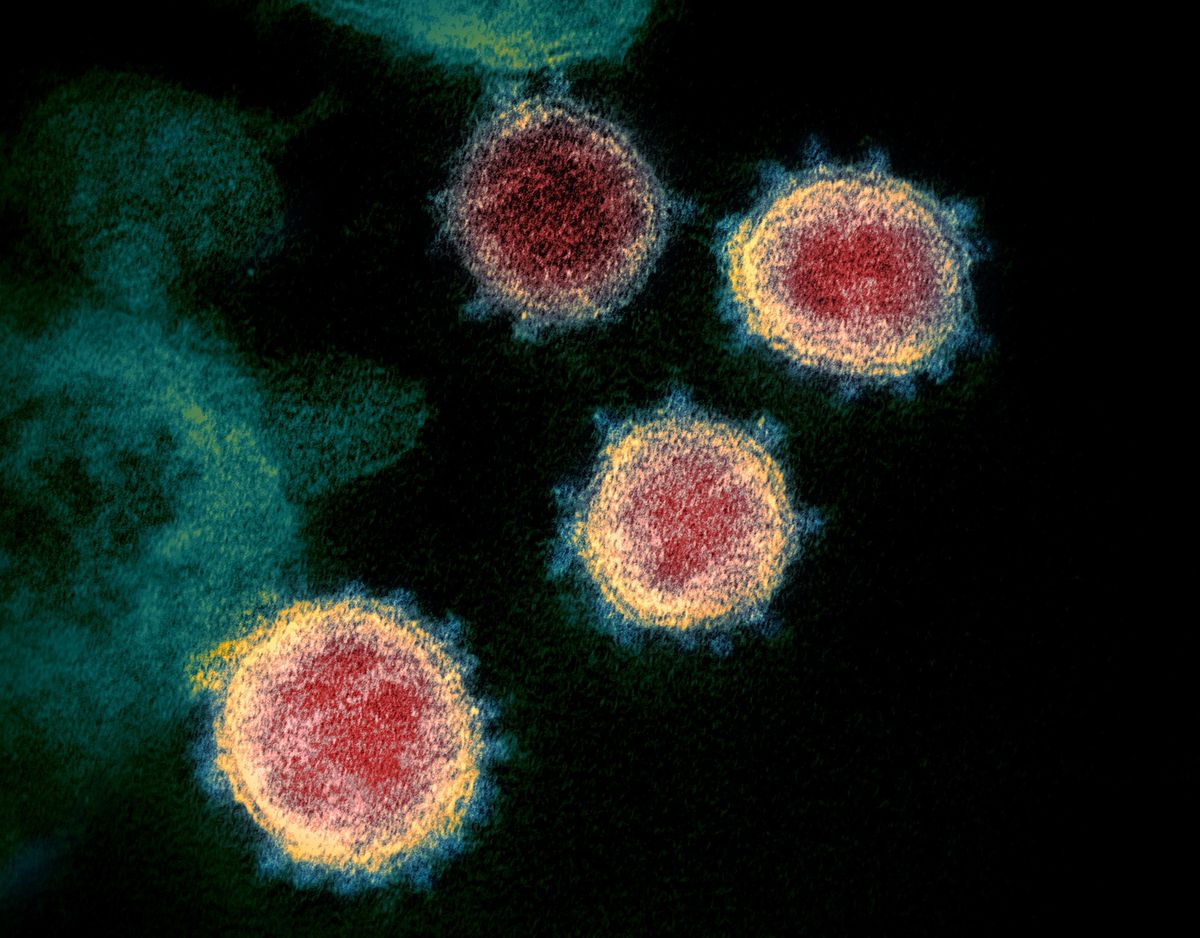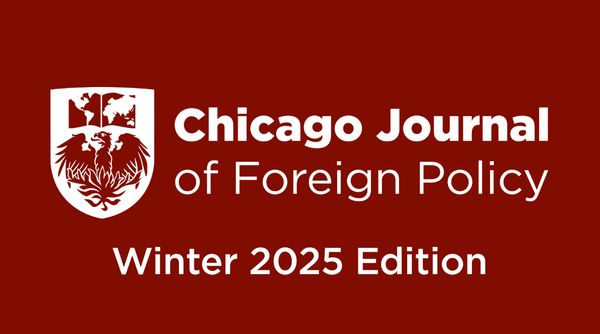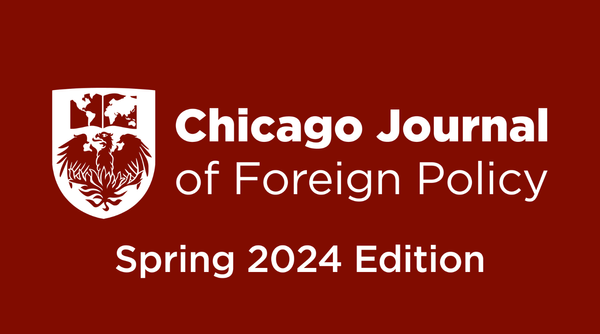The Global Perspective on COVID-19 Vaccine Distribution

by MUZZAMMIL AHMADZADA, Johns Hopkins ’22; WAQAS HAQUE, University of Texas Southwestern ’21; & AHMAD AHMADZADA, University of California Berkeley ’24
The year 2020 will forever be remembered for how an outbreak of the SARS-CoV-2 virus—an infectious agent just under 90 nanometers in diameter—redefined institutions on an international level. What began as a “cluster of pneumonia cases” in Wuhan, China in January[1]turned into a global pandemic resulting in 83.4 million cases of infection and over 1.82 million deaths at the time of this writing.[2]Although various degrees of lockdown were implemented worldwide to reduce the spread of the highly contagious virus, it was evident that only a vaccine providing immunity to the general public would afford society a return to normalcy.
It was this thought in mind that sparked Operation Warp Speed (OWS), a partnership between the Centers for Disease Control and Prevention (CDC), the National Institutes of Health (NIH), the Biomedical Advanced Research and Development Authority (BARDA), and the Department of Defense (DoD). OWS was designed to accelerate the development and distribution of COVID-19 vaccines, with the overall goal being the production and delivery of 300 million doses by January 2021.[3]A major component of this plan was also to provide grants to pharmaceutical companies, who have been taking part in the vaccine race (see Table 1).
While a handful of vaccines began distribution and administration to healthcare providers and high-risk populations around the world in December 2020, the ambitious goal of 300 million doses was not met in time. This raises important questions about the allocation of the coronavirus vaccine. Should it continue to be prioritized to healthcare workers? Should affordability and financial privilege play a role in where the vaccine is shipped? In this paper, we present perspectives on the global distribution policy of the vaccines and our recommendations.
| Developer | Vaccine Type | Phase | Status |
| Pfizer-BioNTech | mRNA | 2,3 | Approved in Canada and other countries. Emergency use in the U.S. and other countries. |
| Moderna | mRNA | 3 | Approved in Canada. Emergency use in the U.S. |
| AstraZeneca-Oxford | Adenovirus | 2,3 | Emergency use in Britain |
| CanSino | Adenovirus | 3 | Limited use in China |
| Gamaleya | Adenovirus | 3 | Early use in Russia. Emergency use in Belarus, Argentina. |
| Vector Institute | Protein | 3 | Early use in Russia |
| Sinopharm | Inactivated | 3 | Approved in China and U.A.E, Bahrain. |
| Sinopharm-Wuhan | Inactivated | 3 | Limited use in China, U.A.E |
| Sinovac | Inactivated | 3 | Limited use in China |
Table 1: Statuses of the world’s leading vaccines[4]
Safety, Efficacy, & Affordability
The distribution of the vaccines has important ramifications for safety, efficacy, and affordability. The various modalities of the vaccines, from Pfizer and Moderna’s mRNA technology to Gamaleya’s adenovirus approach, may lead to hesitation and skepticism among the general public. An early December poll administered just weeks before vaccine rollout showed that only 47% of Americans plan on getting vaccinated, while 26% say they will not and 27% are unsure.[5]This is unsurprising, due to the prevalence of anti-vaccination associations that perpetuate the urban myth that vaccines cause serious neurological disorders.[6]At the same time, having a menu of options to pick from may not be optimal. The paradox of choice says that including more choices to pick from can lead to decision-making anxiety for people, who will then find it difficult to make a final choice.[7]
Another concern is the efficacy of the vaccine in different parts of the world. For a vaccine campaign that seeks to put an end to a pandemic rampaging throughout the entire world, the same immune response for a person of Swedish descent may not be seen in a Ghanaian individual. The pharmaceutical giant Pfizer executed a double-blinded Stage 3 study with approximately 44,000 participants and reported consistent vaccine efficacy across ethnic groups in their study population. This observation was in line with The Food and Drug Administration’s (FDA) Guidance on Emergency Use Authorization for Vaccines to Prevent COVID-19, and thus allowed their vaccine to be approved for emergency use.[8]
However, not all nations have vetted their vaccine candidates so rigorously. In August of 2020, Russia became the first nation to approve a COVID-19 vaccine when it approved the ‘Sputnik V’ vaccine developed by the Gamaleya Center. At the time of approval, Stage 3 studies had not yet commenced, nor had the results from Stages 1 and 2 been published.[9]As of late December 2020, Russian President Vladimir Putin struggles to promote the Russian-made vaccine, with only 38% of Russians saying they are willing to take the vaccine, despite nationwide vaccination programs and the President himself getting vaccinated publicly.[10]This is an example of how the speed at which vaccines are approved and the rigor of their approval process have strong effects on the public perception of vaccine efficacy. And with such speed and lack of significant Stage 3 studies, a shadow is cast on the safety of this vaccine, especially for individuals of different ethnic makeups.
Finally, one of the biggest concerns has been vaccine pricing. Under the current business model, prices for vaccines depend on recouping both research and development (R&D) and manufacturing costs. However, vaccine manufacturers do not make their R&D or manufacturing costs publicly viewable, so there is no objective basis for buyers to negotiate a fair price.[11]This lack of transparency means that countries are at the mercy of the manufacturers and whatever price they determine. Some companies, such as AstraZeneca, pledged to provide their vaccines at cost price to all countries during the pandemic, and to maintain this price for all low- and middle-income countries (LMICs) after.[12]Moderna and Pfizer made no such promise and instead revealed dose prices significantly higher than that of AstraZeneca-Oxford.
| Manufacturer | Vaccine Price (per dose)[JF1] [MA2] |
| Moderna | $32.00 — $37.00 |
| Pfizer | $19.50 |
| Novavax | $16.00 |
| Johnson & Johnson | $10.00 |
| Astrazeneca-Oxford | $3.00 — $4.00 |
Table 2: Vaccine pricing per dose[13]
Vaccine Nationalism
Despite the variety of prices, a number of countries—mainly developed ones—have already pre-ordered close to four billion vaccine doses. The 27 member states of the European union and five other wealthy countries are responsible for half of these pre-orders, despite these countries only accounting for around 13% of the global population.[14]This lack of representation on behalf of LMICs led to the formation of Covax, a global alliance seeking to ensure that LMICs are afforded adequate vaccine provision. These 8.15 billion doses would be enough to cover more than half of the world’s population (since most COVID vaccines require two separate doses per person) if the shots were distributed evenly. Instead, this number is largely constituted of rich countries accumulating extensive supply deals while poorer countries rely on the consortium Covax to provide for them. Thus far, Covax has been able to secure vaccines for around 250 million people, a fraction of the nearly 3 billion people living in LMICs as of July 2020.[15]
A historical example of this phenomenon is that of polio, a paralysis-inducing viral disease first described in the late twentieth century. While vaccines developed in the 1950’s and 1960’s led to the eradication of polio in most developed nations within a decade, it was not until August of 2020 that the African continent was declared free of polio, and countries such as Afghanistan and Pakistan still report dozens of cases to this day.[16]The lack of funding, political will, and stability in LMICs has prevented the vaccine from becoming universally available.
Simply put, the world cannot afford a repeat of historically recurring “vaccine nationalism,” a phenomenon in which wealthy nations obtain and distribute vaccines within their borders and not in a cooperative, international effort.[17],[18]It is in every nation’s best interest to work through inter-governmental organizations, such as the World Health Organization (WHO), to form a fair global vaccine strategy because the highly contagious nature of this disease combined with record high travel numbers means that the world is only as strong as its weakest link. If any nation fails to control the spread of COVID-19 within their own borders, the entire world is susceptible to further outbreaks.19
| Country | People Vaccinated | Last Updated |
| Global Total | 10,306,367 | 31 Dec 2020 |
| China | 4,500,000 | 31 Dec 2020 |
| United States | 3,169,818 | 31 Dec 2020 |
| United Kingdom | 947,206 | 31 Dec 2020 |
| Israel | 800,000 | 31 Dec 2020 |
| Russia | 440,000 | 22 Dec 2020 |
| Germany | 131,626 | 31 Dec 2020 |
| Canada | 95,205 | 31 Dec 2020 |
| Bahrain | 57,317 | 30 Dec 2020 |
| Poland | 36,300 | 30 Dec 2020 |
| Mexico | 24,998 | 30 Dec 2020 |
| Denmark | 23,895 | 31 Dec 2020 |
| Italy | 14,813 | 31 Dec 2020 |
| Slovenia | 9,750 | 29 Dec 2020 |
| Chile | 8,638 | 27 Dec 2020 |
| Croatia | 7,864 | 30 Dec 2020 |
Table 3: The global vaccination campaign tracker[19]
Alternative Vaccine Acquisition Strategies
The United States struck multiple deals for its vaccine supply with companies such as Pfizer and Moderna. Canada, with its population of 38 million, has contracts with at least seven companies to secure vaccines for 112 million people—not including the vaccines they agreed to buy through the Covax consortium.22
Russia and China adopted another approach: instead of striking deals with multinational companies, they are relying on domestically produced vaccines such as the Gamaleya Center’s Sputnik V or those made by China’s Sinopharm, respectively.22The two countries made the unusual decision to allow vaccine distribution before large-scale testing, effectively turning the post-approval process into a country-wide, Stage 3 clinical trial. China began vaccinating its military with CanSino’s shot before late-stage testing was initiated, and Sinopharm administered hundreds of thousands of doses to the general public while their clinical trials were still ongoing.22
On the other hand, less affluent countries are relying on Covax for vaccine acquisition, since there are no promising candidates being developed in their own countries. Covax is made up of 190 participating economies—98 higher income economies and 92 low and middle income economies—and has set its goal of securing access to 2 billion doses of safe, effective, and approved vaccines by the end of 2021.[20]The dean of Brown University’s School of Public Health lamented the absence of the world’s leading countries in this pact: “The fact that the US is not part of this conversation at all, as far as I can tell, is incredibly distressing.”[21]Even Canada, which has secured more doses than they have people,14pledged $62.5 million to support Covax in delivering and reallocating vaccine doses in lower income economies. Canada’s Minister of International Development came forth and said: “As long as one country is at risk, we are all at risk. The Covax Facility is the key to ending this pandemic and will only work if we all come together. Now is the time to make our commitment to equitable access a reality, so that everyone, everywhere has access to a life-saving vaccine.”23
Equitable Distribution, the Elephant in the Room
To aid citizens of developing countries, the WHO announced its “fair allocation mechanism” in late September proposing a two-phase vaccine distribution.24,[22]In the first phase, all countries will receive vaccines proportional to their population, enough to vaccinate 3% of these countries’ populations with priority for frontline workers. After that, additional vaccines would be delivered until 20% of a nation’s population is covered. The WHO anticipates that these doses would be used to immunize a country’s highest risk populations, such as the elderly and those with pre-existing health conditions.
In phase 2, the vaccine would be delivered to countries based on how urgently immunizations are needed. The framework suggests two criteria to be used to determine priority:24
- How fast the virus is spreading and whether other pathogens are spreading at the same time
- How vulnerable a country’s health system is, based on hospital bed and ventilator availabilities and intensive care unit occupancy
However, this plan has been criticized. Ezekiel Emanuel, a bioethicist at the University of Pennsylvania who has written about resource allocation in a pandemic[23], argued that countries with the largest need should be at the forefront of the immunization process from the very beginning. He compares the situation to a doctor facing an overflow in the emergency room deciding to give everybody sitting in the waiting room three minutes of his/her time, instead of addressing the patients in serious, acute condition first. Emanuel contends that sending vaccines to South Korea, New Zealand, or many African countries will not do much to reduce COVID-19 deaths because these nations already have low case and mortality rates.24
While this criticism is valid, it is thought that the WHO adopted this stance to appease politicians and governments in nations that will ultimately be needed to donate vaccine doses and money to lower income countries. Jha expressed this view by stating: “I think [WHO is] probably balancing between trying to get enough people protected, and trying to create enough of a sense of buy-in that people are going to be willing to chip in.”24It should also be noted that while phase 1 prioritizes health-care workers, many lower-income individuals may not have the privilege of social distancing based on their occupation, especially in settings such as restaurants or manual work. Thus, vaccine allocation is as much of an intranational issue as it is an international one.
Ultimately, it will be a mix of politics and logistics that determine which countries get access to which vaccines, and when. For example, Pfizer’s vaccine requires an ultra-cold storage container of negative 80 degrees Celsius. These special refrigerators are not widely available across Asia and Africa currently, and so mass distribution of the vaccine product leads to the risk of improper storage leading to vaccine ineffectiveness. And even if these refrigerators were to be created, a recent study predicts that 15,000 airplanes are going to be needed to distribute the vaccines to the entire world.[24]
Although these logistical issues do not seem as pressing for countries such as the United States and the United Kingdom, it has led to many countries in Latin America relying heavily on vaccine companies like Sinovac in China and Sputnik in Russia for their vaccine doses. So much so, that Brazil and Argentina allowed for the Sputnik V vaccine to be tested in their own countries’ citizens in return for secure delivery of the Russian vaccine when available.27
As for the question of which vaccine will people get, experts such as California State Senator and pediatrician Dr. Richard Pan say choice is a luxury we do not have or need: “Right now, we are trying to maximize getting out the [authorized] vaccines. Whichever vaccine is offered to you first is the one you should take.”[25] Only time will tell which vaccine will be better for which population based on side effects and immune response. What is clear is that beyond the science of the vaccine, foreign policy and economic incentives will play a factor in “who gets what, when, and how.”[26]
[1]“Pneumonia of Unknown Cause – China.” World Health Organization, January 7, 2020. https://doi.org//entity/csr/don/05-january-2020-pneumonia-of-unkown-cause-china/en/index.html
[2]Johns Hopkins University. “Johns Hopkins Coronavirus Resource Center.” Johns Hopkins Coronavirus Resource Center. Johns Hopkins University & Medicine, 2020. https://coronavirus.jhu.edu/map.html
[3]Affairs (ASPA), Assistant Secretary for Public. “Fact Sheet: Explaining Operation Warp Speed.” HHS.gov, August 12, 2020. https://www.hhs.gov/coronavirus/explaining-operation-warp-speed/index.html
[4]Corum, Jonathan, and Carl Zimmer. “Coronavirus Vaccine Tracker.” The New York Times, October 16, 2020, sec. Science. https://www.nytimes.com/interactive/2020/science/coronavirus-vaccine-tracker.html
[5]“AP-NORC Poll: Only Half in US Want Shots as Vaccine Nears.” AP NEWS, December 9, 2020. https://apnews.com/article/ap-norc-poll-us-half-want-vaccine-shots-4d98dbfc0a64d60d52ac84c3065dac55
[6]Gasparini, R, D Panatto, P L Lai, and D Amicizia. “The ‘Urban Myth’ of the Association between Neurological Disorders and Vaccinations.” Journal of Preventive Medicine and Hygiene56, no. 1 (2015): E18. https://www.ncbi.nlm.nih.gov/pmc/articles/PMC4718347/
[7]Clinehens, Jennifer. “The Choice Overload Effect: Why Simplicity Is the Key to Perfecting Your Experience.” Medium, August 21, 2020. https://medium.com/choice-hacking/choice-overload-why-simplicity-is-the-key-to-winning-customers-2f8e239eaba6
[8]“Emergency Use Authorization (EUA) for an Unapproved Product Review Memorandum Identifying Information,” n.d. https://www.fda.gov/media/144416/download
[9]Burki, Talha Khan. “The Russian Vaccine for COVID-19.” The Lancet Respiratory Medicine, September 2020. https://doi.org/10.1016/s2213-2600(20)30402-1
[10]“Putin Promotes Homegrown COVID-19 Vaccine, But Most Russians Are Skeptical.” NPR.org. Accessed December 31, 2020. https://www.npr.org/sections/coronavirus-live-updates/2020/12/24/949943260/putin-promotes-homegrown-covid-19-vaccine-but-most-russians-are-skeptical
[11]“Vaccines in Developing Countries: Why the High Prices?” Speaking of Medicine, April 23, 2013. https://speakingofmedicine.plos.org/2013/04/23/vaccines-in-developing-countries-why-the-high-prices/
[12]“The COVID Vaccine Challenges That Lie Ahead.” Nature587, no. 7835 (November 24, 2020): 522–522. https://doi.org/10.1038/d41586-020-03334-w
[13]“How Much Will It Cost to Get a COVID-19 Vaccine?” Healthline, November 29, 2020. https://www.healthline.com/health-news/how-much-will-it-cost-to-get-a-covid-19-vaccine#How-much-each-dose-will-cost
[14]Mullard, Asher. “How COVID Vaccines Are Being Divvied up around the World.” Nature, November 30, 2020. https://doi.org/10.1038/d41586-020-03370-6
[15]World Bank. “Population, Total for Lower Middle Income Countries.” FRED, Federal Reserve Bank of St. Louis, January 1, 1950. https://fred.stlouisfed.org/series/SPPOPTOTLLMC
[16]“GPEI-This Week.” Polioeradication.org, 2019. http://polioeradication.org/polio-today/polio-now/this-week/
[17]“What Vaccine Nationalism Means for the Coronavirus Pandemic.” Time. Accessed December 31, 2020. https://time.com/5871532/vaccine-nationalism-coronavirus-pandemic/
[18]“U.N. Chief Warns ‘Vaccine Nationalism’ Moving at Full Speed.” Time. Accessed December 31, 2020. https://time.com/5919732/vaccine-nationalism-covid19-coronavirus-pandemic/
[19]“More Than 1.2 Million People Have Been Vaccinated: Covid-19 Tracker.” Bloomberg.com, n.d. https://www.bloomberg.com/graphics/covid-vaccine-tracker-global-distribution/
[20]“COVAX ANNOUNCES ADDITIONAL DEALS TO ACCESS PROMISING COVID-19 VACCINE CANDIDATES; PLANS GLOBAL ROLLOUT STARTING Q1 2021.” http://www.who.int, n.d. https://www.who.int/news/item/18-12-2020-covax-announces-additional-deals-to-access-promising-covid-19-vaccine-candidates-plans-global-rollout-starting-q1-2021
[21]KupferschmidtSep. 21, Kai, 2020, and 3:25 Pm. “WHO Unveils Global Plan to Fairly Distribute COVID-19 Vaccine, but Challenges Await.” Science | AAAS, September 21, 2020. https://www.sciencemag.org/news/2020/09/who-unveils-global-plan-fairly-distribute-covid-19-vaccine-challenges-await
[22]“The Race for a COVID-19 Vaccine.” http://www.who.int, n.d. https://www.who.int/emergencies/diseases/novel-coronavirus-2019/covid-19-vaccines
[23]Emanuel, Ezekiel J., Govind Persad, Ross Upshur, Beatriz Thome, Michael Parker, Aaron Glickman, Cathy Zhang, Connor Boyle, Maxwell Smith, and James P. Phillips. “Fair Allocation of Scarce Medical Resources in the Time of Covid-19.” New England Journal of Medicine382, no. 21 (March 23, 2020). https://doi.org/10.1056/nejmsb2005114
[24]Welle (www.dw.com), Deutsche. “Coronavirus Vaccine — How to Distribute It around the World? | DW | 27.11.2020.” DW.COM, n.d. https://www.dw.com/en/coronavirus-vaccine-how-to-distribute-it-around-the-world/a-55746075
[25]Naftulin, Anna Medaris Miller, Julia. “Which Coronavirus Vaccine Will You Get?” Business Insider. Accessed December 31, 2020. https://www.businessinsider.com/which-cooronavirus-vaccine-will-you-get-pfizer-moderna-2020-12
[26]“Politics: Who Gets What, When, How | Work by Lasswell.” In Encyclopædia Britannica, 2019. https://www.britannica.com/topic/Politics-Who-Gets-What-When-How
[JF1]Is this the price that consumers would pay? And if it is the consumer price, is this accounting for insurance coverage? May just want to clarify what is meant by price.
[MA2]Countries! People get them free of charge. This is referring to the bulk orders that countries are placing to secure doses for their respective populations.





